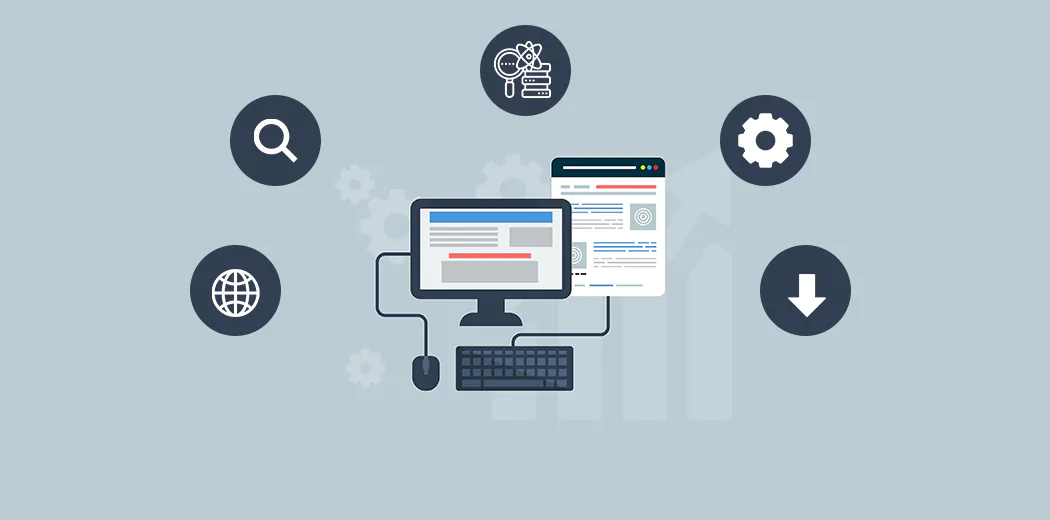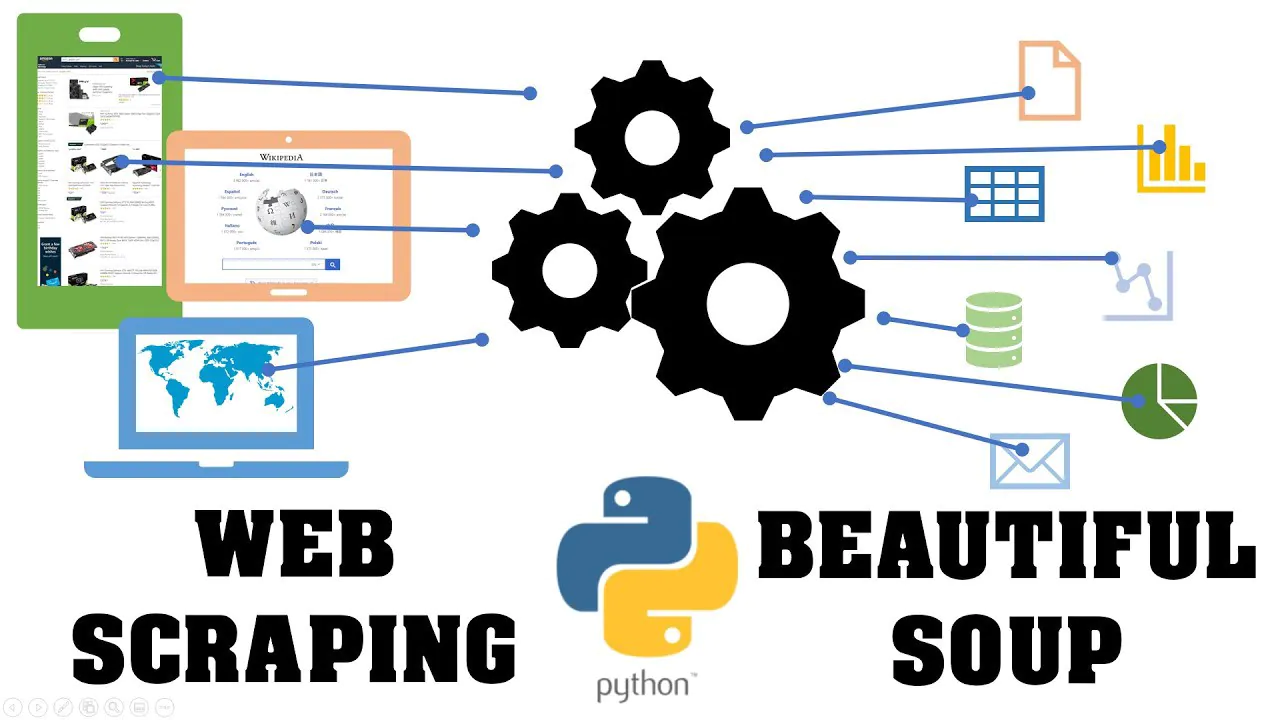
Best Python Libraries for Web Scraping
There is no doubt that web scraping has become an essential part of business for various reasons. Without data analysis, no business can grow. Using web scraping programs is an excellent way to get information from various websites. However, choosing the best scraping tool is important since one can find numerous web scraping tools. But before you can start scraping, you must pick a programming language. Using Python is a good choice. It’s fast and simple to use and comes with advanced web scraping libraries. This post will tell you the best Python libraries for web scraping.
What is web scraping?
Web scraping, web harvesting, or web data extraction are all words used to describe the automated process of gathering vast amounts of unstructured data from websites. The user can extract all the information from particular websites or just the information they need. For further analysis, the gathered data can be saved in an organized format. Web Scraping helps Ecommerce websites in many ways.
What is Python language?
Python is an interpreted, object-oriented, high-level, dynamically semantic programming language. It is particularly desirable for Rapid Application Development and as a scripting or glue language to tie existing components together due to its high-level built-in data structures, dynamic typing, and dynamic binding. Python’s straightforward syntax prioritizes readability and makes it simple to learn, lowering program maintenance costs. In addition, Python’s support for modules and packages promotes the modularity and reuse of code in programs. The Python interpreter and the comprehensive standard library are freely distributable for all popular platforms and available in source or binary form.
Python is known for its “small code, big task” approach. It uses variables wherever needed, and its idioms are useful for parsing and data analysis. For example, you can use Python to build an application that automates web scraping or to make your website look like a web browser.
Python is one of the most popular programming languages. It has a large community of developers and is easy to learn. It’s also flexible and can be used for many different purposes. The language also has a huge collection of libraries. Here are some of the best python libraries:
lxml
XML is a markup language used to create web content. It is often used in conjunction with HTML, a markup language used to create and format web pages.
lxml is an XML library in Python that allows you to process XML documents easily. It combines the speed of a native C library with the ease of use of the Python API. It is an excellent choice for web scraping.
You can use lxml to create XML documents, query XML documents, and manipulate HTML files. You can also write your custom XML parsers using the lxml library. This library is also a great choice if you are working with soupy HTML. The lxml library also supports XPath, a query language for XML that is used to find parts of an XML document. It is a highly powerful language that allows you to match elements using identity and ancestors.
XPath is used in web scraping. It is a powerful yet very general language. For example, you can use XPath expressions to find elements based on ancestors or textual matches. It also allows you to skip layers of elements.
You can use the fromstring() method to return an element object without calling getroot(). This method can simplify your code and help you create parent-child relationships. It can also print a well-formed XML document.
XPath expressions are useful in web scrapping because they allow you to match elements based on identity and ancestors. They are also highly flexible, which is important if you plan to develop a program that will be used extensively in web scraping. They can also be used to identify specific elements in an XML document.
Requests
The Requests library is one of the best Python libraries for web scraping. It is easy to use and comes with the coolest-looking interface you’ll ever see.
The ability to send and receive HTTP requests is an important component of web scraping. It allows you to interact with web APIs and other websites. Luckily, Python has a library that makes this process easy to accomplish. It is called the Requests module.
The Requests library is a good starting point for getting your hands dirty with HTTP. It comes with pre-written functions for the most common HTTP methods. This includes GET, POST, PATCH, and DELETE. It also includes an easy-to-use interface for query parameters. It also makes it easy to send HTTP requests in Python. The Requests library supports multiple languages and can be used with proxies.
The Requests library also includes the lxml, a library for converting XML and HTML data into a usable form. It is the most feature-rich XML library on the market.
The Requests library is a great way to send and receive website data. It also makes it easy to handle cookies and other query parameters. It can even be used to download images.
The Python requests module is a good way to get your hands dirty with web scraping. The best part about it is that you can easily bookmark it to access it later. You can also use it in other programs to help you accomplish your scraping goals.
Many other libraries and tools can make the task of parsing HTML easier. Some of the best include Beautiful Soup, lxml, and the Requests library. These are some of the best Python web scraping libraries available.
Selenium
Using Python language for web scraping can help you extract data from websites. For example, you can use Python to scrape information about people, stock markets, and other related topics. There are various tools available, but Selenium is one of the best.
Selenium is an open-source web development tool that helps you automate testing and data extraction tasks. It uses a Python scripting language to control browsers, collect data and execute tests.
Selenium is an excellent choice for small-scale use cases. However, it could be better for large-scale scraping projects. Selenium is also slow compared to other web scraping tools. In addition, it can be cumbersome to implement, and there needs to be more technical support available.
Selenium is an open-source test automation framework with several free software projects. It’s available under the Apache 2.0 license. It is a useful tool for testing web applications and is also used for machine learning. The Selenium community is also a great resource for information and peer-to-peer support.
Selenium is a powerful web scraping tool for testing and collecting data from websites. It’s also useful for signing in to websites and filling out forms. Selenium works on many different operating systems and can be run remotely. It’s especially useful for collecting data on specific website components, like buttons or drop-down lists.
BeautifulSoup
A python-based parsing library called BeautifulSoup enables you to extract data from a web page that has been poorly designed. It organizes an HTML or XML web page, finds the information you desire from among the rest, and enables you to extract the necessary information in the appropriate format. It needs to be more comprehensive, but it can crawl pages or send GET queries.
The parsing utilities that makeup BeautifulSoup include html.parser, lxml, and HTML5lib. In this manner, you can experiment with various parsing techniques to profit from them in various circumstances.
The simplicity of use of BeautifulSoup is a significant plus. You can create a scraper with just a few lines of code. However, this doesn’t always mean that it is fragile, either. These and other factors make BeautifulSoup popular among developers. You can find various solutions to the problems you could run across when using this library in the online community.
Even though BeautifulSoup supports simultaneous requests, it isn’t easy to set up and slower than Scrapy. Therefore, you can utilize BeautifulSoup if your web scraping operation is small and doesn’t require extensive data extraction.
Final words
Web scraping is a popular topic among data science enthusiasts. It can be used to gather important information from websites. It also can be used to automate processes. It involves using a web browser to obtain information and then copies it into a local database. This process can be done manually, or a software user can implement it. Using the right tool for the job is key to a successful web scraping endeavor. Check out the website’s Terms of Use before you start scraping. Failure to do so could land you in hot water. In addition, you may need more data to scrape. You may also find that the website’s acceptable use policy prohibits automated access.
Choosing a programming language for web scraping may be more challenging than a language for general use. You’ll need to choose a language with the best features for your specific application. You’ll also need to consider cost and maintainability.
Python is the best language for web scraping services. It has an extensive collection of libraries and frameworks and can handle virtually all data extraction processes. You’ll also have access to a large community of users.




